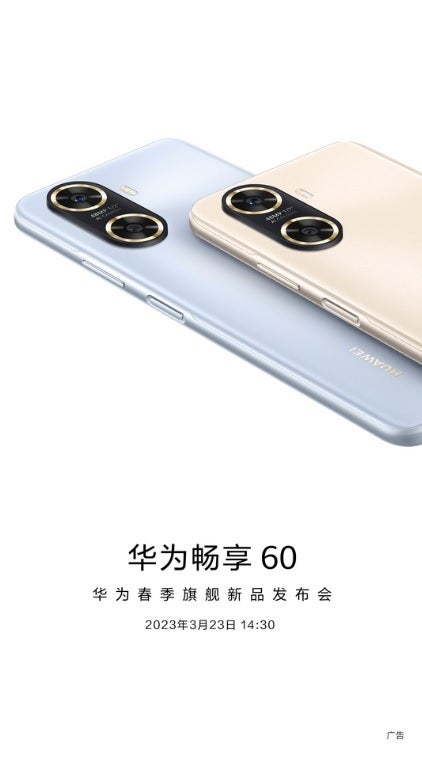Huawei Enjoy 60 to be unveiled next Thursday with 14nm Kirin chip and a 6000mAh battery
The Huawei Enjoy 60 will reportedly be equipped with a 6000mAh battery
Let’s get back on track. Based on rumored specs, the Enjoy 60’s claim to fame will be the large 6000mAh battery that will be in charge of keeping the lights on. It’s a huge battery but it will charge at a rather pedestrian speed of 22.5W. The phone will sport a 6.75-inch LCD display with an HD+ resolution of 720 x 1600 and a basic 60Hz refresh rate. There is a water-drop notch housing the front-facing 8MP selfie snapper. The HD display and the large battery should result in amazing battery life for the phone.

Huawei promotes next Thursday’s unveiling of the Enjoy 60
The Kirin 710A features four Cortex-A73 Performance CPU cores running at 2.0GHz and four Cortex-A53 Efficiency cores running at 1.7GHz. In other words, don’t expect the Enjoy 60 to be a powerhouse. And this will be reflected in the pricing of the two variants. One, with 8GB of RAM and 128GB of storage, is expected to be tagged at the equivalent of $190. The other model, with 8GB of RAM and 256GB of storage, will cost the equivalent of $220.
The Huawei Enjoy 60 will feature a 48MP primary camera on the back along with a 2MP depth sensor
The Enjoy 60 will have HarmonyOS 3.0 pre-installed. This is not the latest version of Huawei’s home-grown operating system as the P60 line will have HarmonyOS 3.1 running the show. The phone will have a side-mounted fingerprint scanner integrated into the lock screen button and on the back is a 48MP camera with a 2MP depth sensor.


